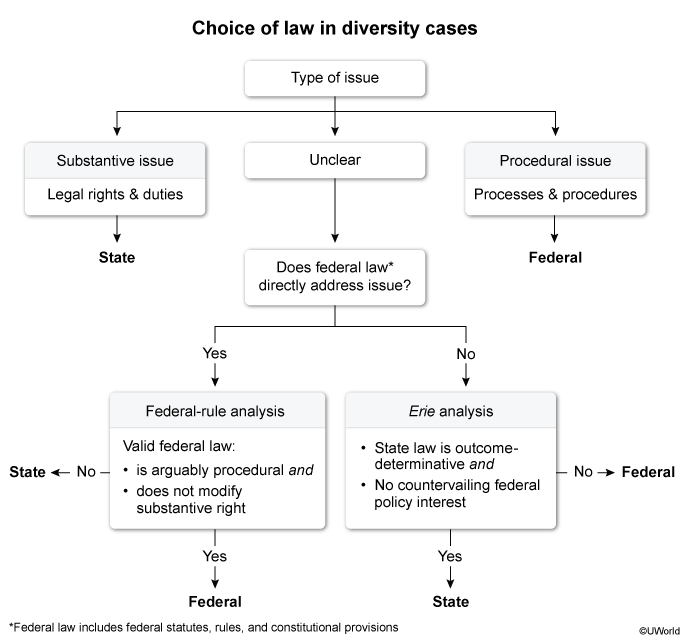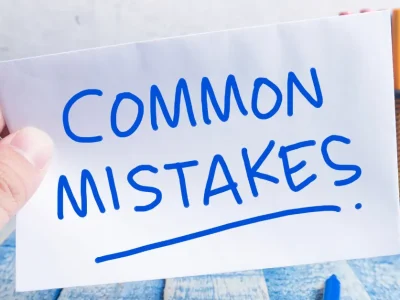If your blood pressure just spiked, take a deep breath, and relax. UWorld is here to help you conquer the Erie doctrine on the MBE®. The good news is that you only need to worry about Erie in one limited situation:
- when a federal court is sitting in diversity (>$75,000 + citizens of different states),
- the court needs to determine whether federal or state law applies to an issue.
Which law applies is usually clear—federal law applies to procedural issues, and state law applies to substantive matters. Here are some common examples of each:

It’s even easier when federal and state law are in harmony since you apply both laws to the issue. But when the laws are in conflict, and the issue is not clearly procedural or substantive, students sometimes get tripped up. Luckily, that won’t be you!
When a conflict arises, determine if a valid federal law directly addresses the issue. If so, use the federal-rule analysis. Under this test, federal law applies if it (1) is arguably procedural, and (2) does not modify a substantive right. This dynamic occurs when federal law merely regulates the manner and means of a lawsuit; (e.g., how to initiate a suit, who may join, and other “housekeeping” matters) as opposed to legal rights (e.g., available remedies, defenses, etc.).
When no federal law directly addresses the issue, use the Erie analysis. Under this test, state law governs if (1) the state law is outcome determinative and (2) there is no countervailing federal interest. This situation occurs when the failure to apply state law would result in either:
- forum-shopping – litigants will be encouraged to sue in federal court to take advantage of benefits not afforded in state court or
- inequitable administration of the laws – the application of substantially different rules in federal and state court will cause unfair outcomes.
For example, suppose a state law imposes a rigorous test to review an excessive jury award, and the federal court ignores that test in favor of a less stringent one. Higher awards would be upheld in federal court but not state court. This outcome would incentivize plaintiffs to sue in federal court and create inequity. To avoid this, Erie logically requires that the federal court apply state law.
Here’s a flowchart summarizing these steps. If you tackle these issues step by step, you’ll breeze through any choice-of-law question that you encounter on the MBE.

Use this tip when answering practice questions in the UWorld MBE® QBank. Access our MBE QBank or purchase a subscription.




